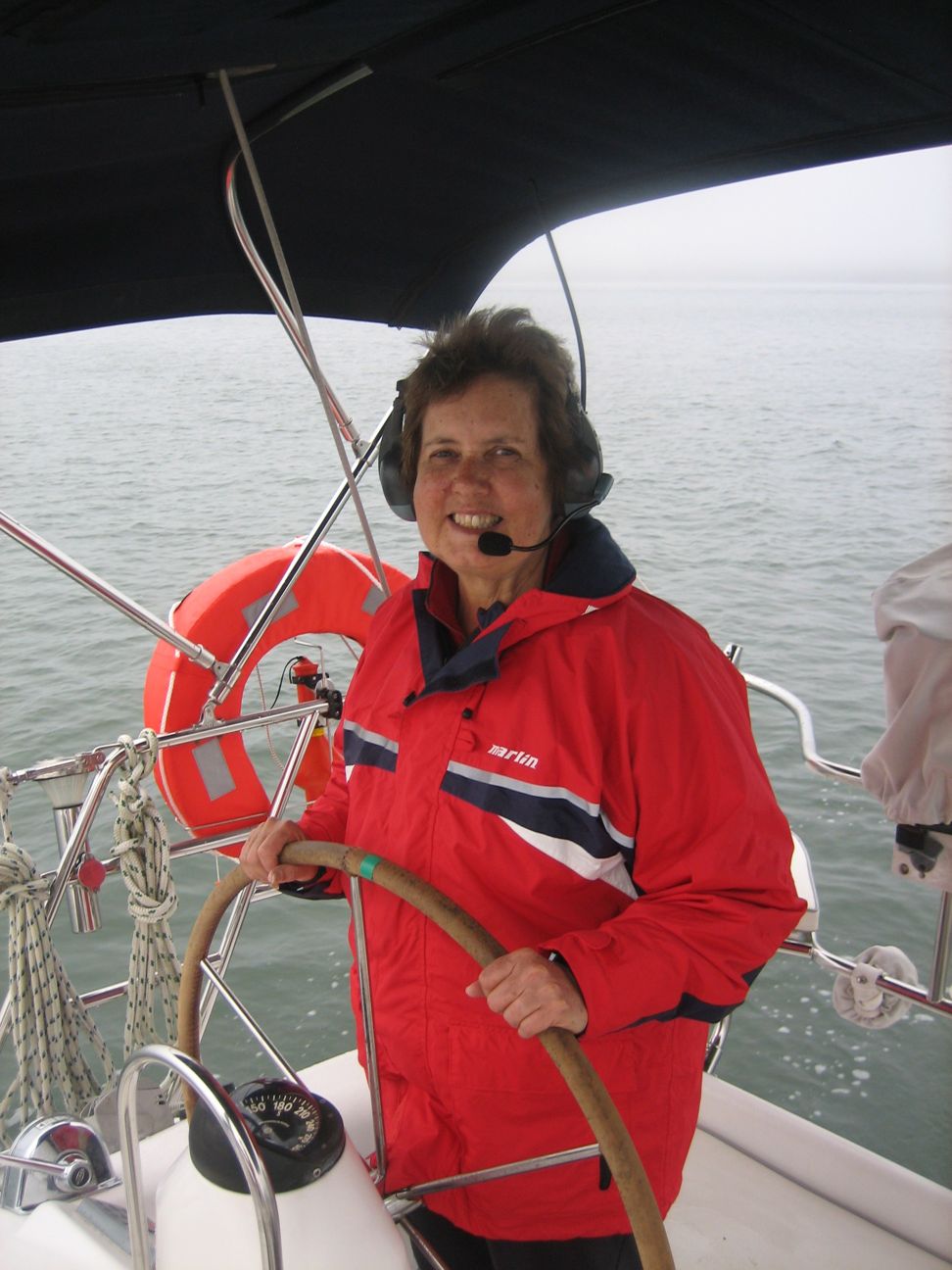
If you watch the maxi yachts racing towards Bass Strait and Hobart every Boxing Day, you will see that they have a LOT of people on deck. There are bowmen, headsail and mainsail trimmers, grinders, a navigator and a helmsman. On professional boats everyone is a specialist and they operate as a big team. Typically only a couple of people, the best, steer the boat, swapping at each change of watch, because even on the fastest boats, they still must sleep at sea.
Contrast that with a cruising boat which is sailed short-handed with perhaps only two to three crew. Somehow they must still do everything on the boat, trim the sails, navigate, steer, cook, and keep a lookout. Oftentimes crew will be on deck by themselves and they will have to do everything.
Rule 5 of the Collision Regulations requires, "Every vessel shall at all times maintain a proper lookout by sight and hearing as well as by all available means appropriate in the prevailing circumstances and conditions so as to make a full appraisal of the situation and of the risk of collision."
Why might that be important? Well you must always remember that on a yacht you can only see another yacht or ship when they are 3-6 nautical miles away. If you are travelling towards each other and both vessels are travelling at 6 knots then your closing speed will be 12 knots and you will have perhaps as little as 15-20 minutes before a collision. If it is a ship travelling faster at say 15 knots, with reduced ability to manoeuvre then there might be even less time before you are in mortal danger.
So how do you do everything you need to do on a boat and still keep a safe a lookout? Well you must have help. You need an autopilot to relieve you by keeping the boat on course so you can still scan the horizon. And you need it more when the wind and waves get bigger.
An autopilot is essential
With COVID-19 abroad in our communities, many organisations are finding that they just have to work short-handed. However you still have to find time to speak with key suppliers and customers and understand how to respond to the many challenges that confront you. It is likely that you will have to find more time to scan the horizon as the world is throwing up new challenges all the time, and potentially new opportunities too, and they are likely to come at you faster than you originally thought.
In these circumstances an autopilot to handle the day to day purchasing and replenishment decisions is critical.
One of our clients went on the record with a five-fold productivity improvement and that they accepted 95-100% of the purchasing recommendations. This freed them up to make strategic sourcing and other decisions that ultimately were so much more important. In fact when they lost their key purchasing officer, they were able to function more than adequately with just a temp, chiefly because the system handled all the detailed decisions, and made them consistent with management's objectives.
Yet another focuses on keeping master data accurate and then setting policies and rules to control how the system is meant to operate. By embracing such an autopilot capability, they are able to comfortably leave the system to auto-release 1,500 to 2,000 replenishments per day across their branch network. Such an organisation is much better positioned to handle the inevitable interruptions that COVID-19 will throw at them, but they will also have more time to scan the horizon for the opportunities that may well arise in the recovery when it comes.
So what are some of the things that might need to be in a good autopilot?
Well the autopilot ought to handle:
- Setting stock levels so that they meet your objectives in terms of service levels and return on investment
- Rationing short supply so stock ends up where it is most needed
- Automatically shifting any excess to where it might be better used
… and a lot more besides, because for every function that can be handled by the autopilot, the more you and your staff are freed up to make sure the overall ship is heading in the right direction and you are keeping away from the many hazards that are out there.
Even smarter systems
One of the very important systems improvements in yachting and shipping in recent years has been the widespread use of AIS (Automatic Identification System) for all commercial ships and many recreational vessels. Each equipped boat transmits to every other boat its identity, speed and course. With this information each vessel can compute which other vessels might be on a collision course with them, greatly increasing safety at sea.
Imagine if your suppliers and customers could all have autopilots to better handle their inventory decisions but then link them to make everyone even more effective.